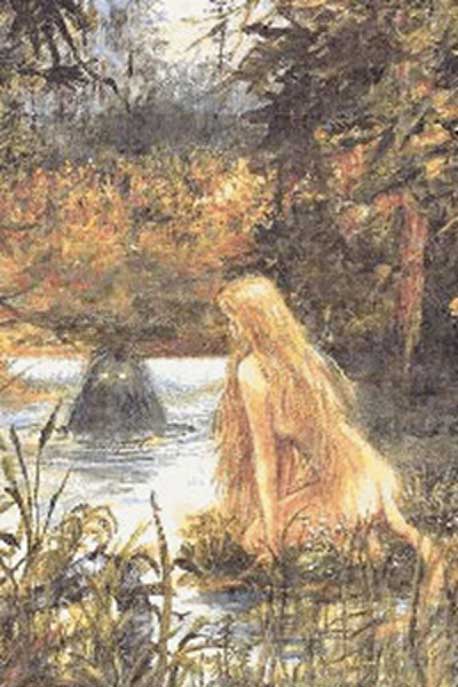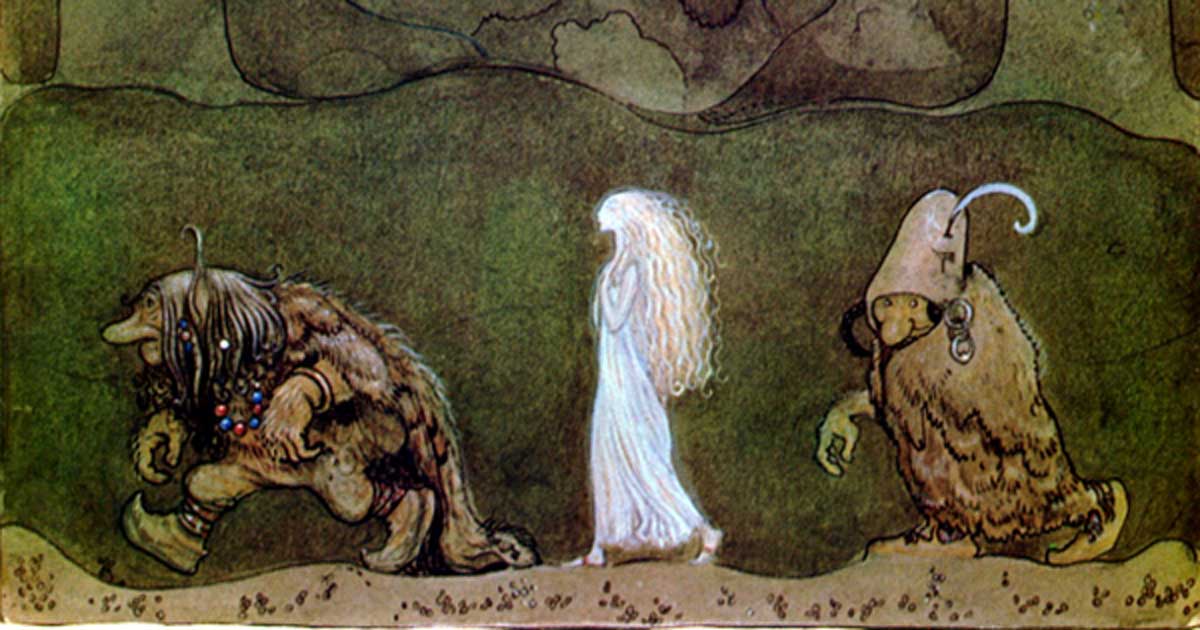The Weird, Wonderful and Wicked Beings in Scandinavian Folklore
In Scandinavian folklore, there are numerous races of beings, the best-known of which (apart from human beings) are the gods and the jötnar, their nemesis. In rather simplistic terms, these may be said to represent the forces of good and evil. Between these two groups of beings are a range of creatures that come in all shapes and sizes. Some are believed to be benevolent towards human beings, whilst others less so.
Some of the beings from Scandinavian folklore are well-known, and have been used in modern works of fiction, such as the Lord of the Rings trilogy by J.R.R. Tolkien. Others, however, are much less renowned, and perhaps only familiar amongst enthusiasts of this field. This article will look at some of the well-known and lesser-known beings in Scandinavian folklore.
The Dwarves and the Elves
It is fair to say that two of the best-known groups of Scandinavian mythical creatures are the dwarves and the elves. According to Norse mythology, dwarves are master blacksmiths who live in underground cities. They are also characterised by their short physical stature, with the males of this race almost always sporting long beards. Originally, however, they were thought to have been pale and ghastly in appearance. One hypothesis is that the idea of dwarves evolved from a form of Indo-European ancestor worship.
Unlike the dwarves, the elves are believed to be graceful, ethereal beings. According to Nordic folklore, elves live in meadows and forests. Although generally depicted as peaceful creatures (and often portrayed as good in modern media), there are some Scandinavian tales in which elves are the perpetrators of wicked deeds.

"To make my small elves coats." Illustrations to Shakespeare's A Midsummer Night's Dream by Arthur Rackham (public domain)
The Scandinavian Troll
Another creature from Scandinavian folklore that many would be familiar with is the troll. Whilst the physical appearance of the troll may differ from one tale to another, it is generally agreed that they are huge and ugly. Their great size, however, is not matched by their intellectual capacity, and they are often seen as slow and stupid.
Whilst trolls are often portrayed as antagonists in modern media, they are said to be able to show kindness if one does a favor for them. It may be interesting to point out that when Christianity arrived in Scandinavia, trolls were ‘given’ the ability to smell the blood of a Christian man. This was a symbolic gesture to personify the old, pagan ways, which the new religion condemned.
- Of Monsters and Men: What Is the Grim Being Known as Grendel from the Epic Beowulf?
- The long goodbye to Scandinavian Paganism and the Christianization of three realms
- Ancient DNA Sheds Light on the Mysterious Origins of the First Scandinavians

Scandinavian trolls by John Bauer (public domain)
The Seductive Huldra
The influence of Christianity on Nordic folklore may also be seen in a being known as the Huldra, who is described as a beautiful, seductive creature who lives in the forest. Huldra looks like a normal woman, though with one major exception – her long tail. This creature would lure mortal men into her forest den in order to steal their souls.
When Christianity arrived, this story was given a twist. If the Huldra was able to convince a man to marry her in a church, her tail would fall off, and she would become human. She would also, however, lose the beauty she is so famous for. Another story about Huldra that came with Christianity is that she was a daughter of Adam and Eve. One day, as Eve was bathing her children, God came to visit. As not all the children were clean, Eve hid the dirty ones. Having seen the children, God asked if there were any more, to which Eve replied ‘no’. God declared ‘Then let all that is hidden, remain hidden’, and the hidden children became ‘De Underjordiske’ (meaning ‘The Ones Living Underground’), Huldra being one of them.

The seductive huldra (public domain)
The Many Faces of Scandinavian Folklore
There are many other beings in Scandinavian folklore, some of which will be briefly mentioned here. The oceans, for instance, are said to be home to such creatures as the Kraken, the Trolual, and the Draugen. Whilst the first two are said to be giant sea creatures, the third is believed to be the spirit of spirit of someone who died at sea.
Little folk can also be found in Scandinavian folklore, and these include the Tusser, who are mischievous underground goblins, and the Nissen, who are pranksters living in barns, though they may be easily befriended, and play the role of Santa Claus during Christmas.
Lastly, such terrifying creatures as Pesta (the personification of disease and plague), the Night Raven (an enormous bird linked with death and calamity), and the Nokken (a water creature notorious for killing its victims by drowning them) are also mentioned in Scandinavian folklore.
Top image: Painting by John Bauer of two trolls with a human child they have raised (public domain)
By Wu Mingren
References
Dominick, S., 2018. Ten Lesser-Known Mythological Beings Found in Scandinavian Culture. [Online]
Available at: https://exemplore.com/paranormal/Ten-Lesser-Known-Mythological-Beings-found-in-Scandinavian-Culture
iespaz-andradecomeni.tripod.com, 2002. Mythical Creatures in Norwegian Folkbelief. [Online]
Available at: http://iespaz-andradecomeni.tripod.com/lendanoruega.htm
McCoy, D., 2018. Gods and Creatures. [Online]
Available at: https://norse-mythology.org/gods-and-creatures/
WilkinsonBec, 2018. 10 Famous Scandinavian Folklore. [Online]
Available at: https://www.enkivillage.org/scandinavian-folklore.html
Winther-Sørensen, R., 2012. 10 Creatures in Scandinavian Folklore. [Online]
Available at: https://listverse.com/2012/10/15/10-creatures-in-scandinavian-folklore/
Country Folklore. Available at https://www.gocompare.com/travel-insurance/country-folklore/ [Online]

















